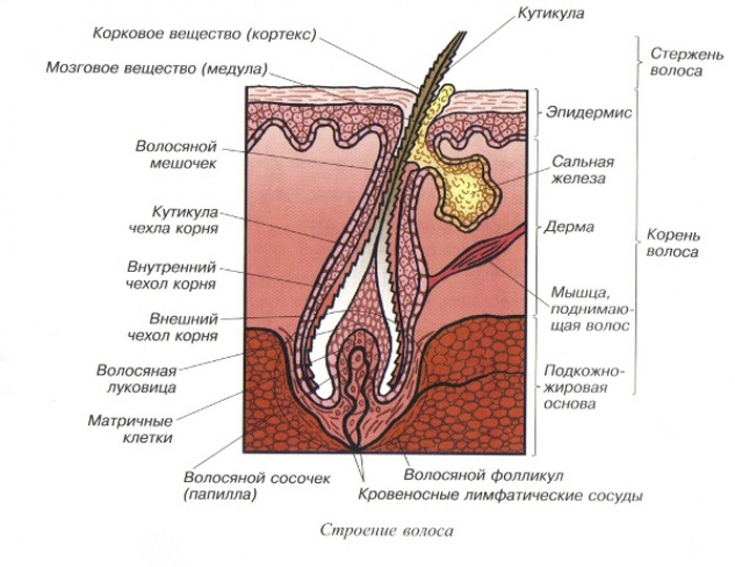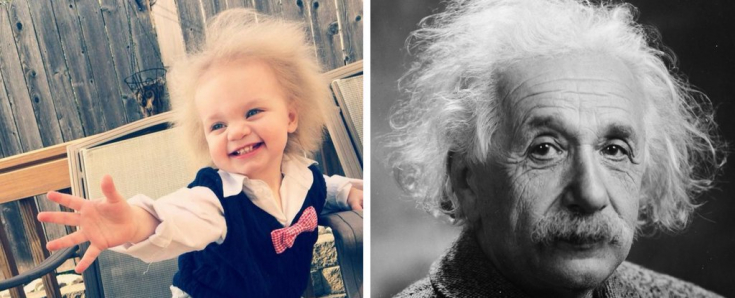Differences in hair morphology have been documented in human populations that belong to the respective races. Hair structure is considered to be genetically determined.
For example, the hair of people of African descent has a flattened cross-sectional appearance and is usually spirally twisted. Caucasoid hair has an oval cross-section, while the hair of Asians — round, resulting in straighter hair.
In the article estet-portal.com you can get acquainted in detail with the main causes of alopecia and identified genetic anomalies that predispose to the development of central centrifugal cicatricial alopecia and unkempt hair syndrome.
Awareness of this pathology and a set of measures to change habitual care procedures, such as hair styling, can change the phenotype of this genetic mutation.
Key structures for hair shaft growth
The main signaling center of the hair follicle is located in the dermal papilla, which consists of a specialized population of fibroblasts that is responsible for the regeneration and cycling of the follicle. The dermal papilla interacts with the overlying epithelial cells, known as the hair matrix, to form the hair shaft.

The size of the dermal papilla niche is dynamic and actively regulated, and the number of cells that make up the dermal papilla decreases. This is believed to contribute to hair loss or thinning. The hair shaft itself contains a complex configuration of structural proteins, including many keratins, which are responsible for the proper formation and growth of the hair shaft.
Watch the most interesting videos on our channel in Youtube
Alopecia as a multifactorial pathology
Causes of alopecia:
1. Age-related thinning and hair loss can be partly explained by hormonal follicle miniaturization, which is often associated with androgenetic alopecia or hair loss.
2. Immune factors such as lymphocyte-mediated destruction of the lower part of the follicle are a hallmark of autoimmune forms of hair loss such as alopecia areata (baldness).

4. Finally, there are other forms of alopecia, the cause of which has not yet been described. These include a group of primary scarring alopecias, including lichen planus, frontal fibrosing alopecia, and central centrifugal scarring alopecia.
In primary scarring alopecia, hair loss is associated with rapid, progressive destruction of the follicles, followed by replacement with fibrous connective tissue.
Knowledge of genetic predisposition can affect hair care
Nucleotide sequence analysis revealed four mutations in the PADI3 gene in 5 women of African descent with central centrifugal cicatricial alopecia (each woman was heterozygous for the mutation). Some of these mutations cause the encoded protein, peptidylarginine deminase type 3 (PADI3), to malform and form intracellular aggregates.

Uncombed hair syndrome refers to an abnormality of the hair shaft that is characterized by excessively curly hair.
Mutations in PADI3 in children with unkempt hair syndrome occur either in the homozygous or compound heterozygous pattern, indicating an autosomal recessive pattern of inheritance.
Atrophic alopecia (Broca's pseudopelade): clinic, diagnosis and treatment
New information — new possibilities for diagnostics and therapyThe mutations in PADI3 are different in the two conditions, suggesting different pathogenic consequences of specific PADI3 variants on hair development.
The authors of the study suggest that PADI3 mutations predispose people to central centrifugal cicatricial alopecia, which is clinically manifested when mechanical damage to the hair during styling damages the hair. Thus, in a family setting, such hair care should not be encouraged for both symptomatic and asymptomatic carriers of the mutant gene.
The presence of a mutation in PADI3 in both central centrifugal cicatricial alopecia and unkempt hair syndrome suggests that this gene has a pleiotropic effect on hair structure determination, and the detection of the mutation has implications for future therapy aimed at restoring PADI3 activity.
Thank you for staying with estet-portal.com. Read other interesting articles in the "Trichology" section. You may be interested in
Anagen Alopecia: Causes and Treatment







Add a comment